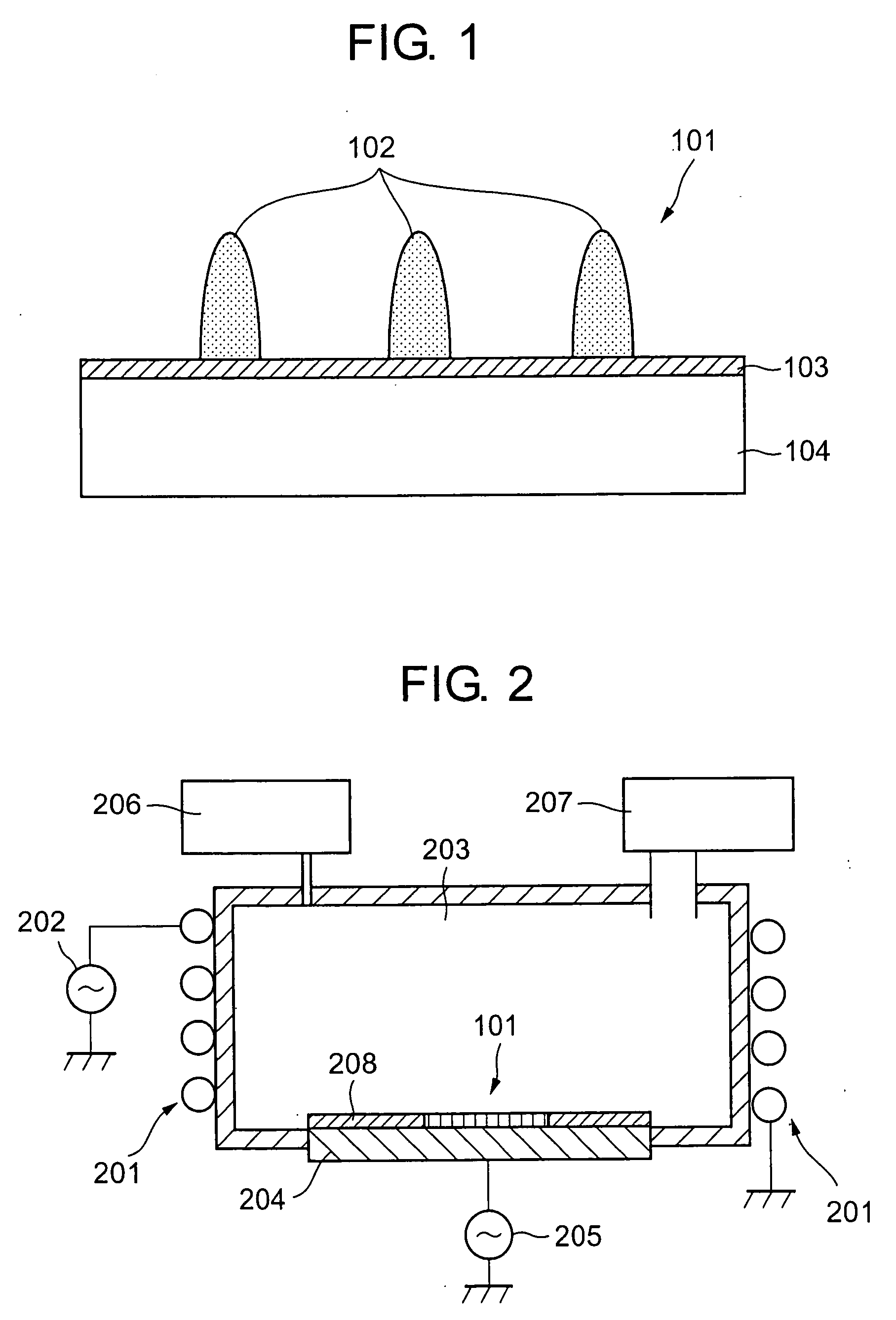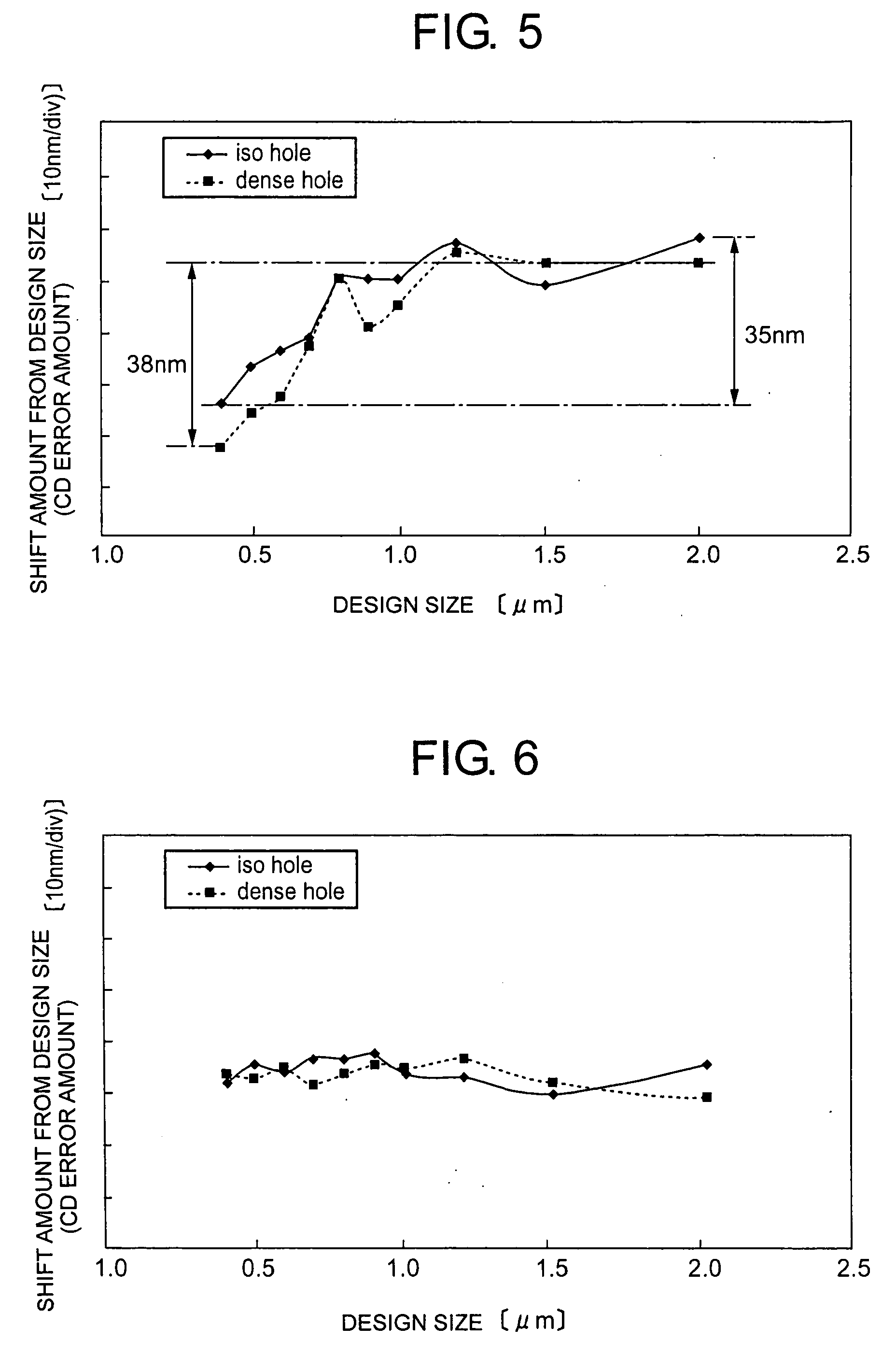Method for etching chromium thin film and method for producing photomask
a technology of chromium-based thin film and dry etching, which is applied in the direction of originals for photomechanical treatment, instruments, optics, etc., can solve the problems of size and shape, the inability to meet the demand for a higher-resolution pattern of photomask following the development of a higher degree of integration of semiconductor integrated circuits, and the obstacle to practical us
- Summary
- Abstract
- Description
- Claims
- Application Information
AI Technical Summary
Benefits of technology
Problems solved by technology
Method used
Image
Examples
first embodiment
[0072] In a first embodiment of the present invention, upon etching a chromium-based thin film made of a material containing chromium by the use of a resist pattern as a mask, etching is carried out by the use of a chemical species produced by preparing a dry etching gas comprising a mixed gas containing a halogen-containing gas and an oxygen-containing gas and supplying a plasma excitation power to the dry etching gas to thereby excite plasma. As the plasma excitation power, a power lower than a plasma excitation power at which plasma density jump occurs is used.
[0073] For example, in case of the ICP system, the plasma excitation power is ICP power. As regards the plasma density jump, the above-mentioned second prior art describes the relationship between a plasma electron density and the ICP power. When the ICP power increases, the plasma electron density tends to increase and, at a certain ICP power, density jump occurs as a phenomenon that the plasma electron density rapidly in...
second embodiment
[0086] In a second embodiment of the present invention, upon etching a chromium-based thin film made of a material containing chromium by the use of a resist pattern as a mask, etching is carried out by the use of a chemical species produced by preparing a dry etching gas comprising a mixed gas containing chlorine and oxygen and supplying a plasma excitation power to the dry etching gas to thereby excite plasma. The thin film is etched in presence of an organic substance other than the resist pattern while supplying at least a part of the chemical species to the thin film in a direction perpendicular to the thin film. Thus, the etching is carried out while depositing an organic product on a side wall of a resist layer etched by an isotropic etching component.
[0087] According to the second embodiment of the present invention, the dry etching is performed in presence of the organic substance other than the resist pattern while supplying at least a part of the chemical species to the ...
example 1
[0100] First, FIG. 1 shows a mask substrate 101 provided with a resist pattern, which is an object of etching in this example. The mask substrate 101 has a layered structure comprising a resist pattern 102 having a thickness of 400 nm, a Cr-based film (representing a film made of a material containing Cr; the same also applies hereinafter) 103 having a thickness of 100 nm, and a glass substrate (synthetic quartz substrate or the like) 104. As the resist pattern 102, a photoresist or an EB resist is used depending on an exposure apparatus to be used. In either case, each side wall of the resist pattern is approximately vertical in section. The resist pattern 102 covers 80% or more of an area of the Cr-based film 103.
[0101] Next, FIG. 2 shows a structure of an etching apparatus (of an inductive coupling plasma (ICP) system) used in this example.
[0102] This apparatus comprises a plasma generation coil 201, a coil-energizing RF power supply 202, a vacuum chamber (hereinafter referred ...
PUM
| Property | Measurement | Unit |
|---|---|---|
| size | aaaaa | aaaaa |
| size | aaaaa | aaaaa |
| size | aaaaa | aaaaa |
Abstract
Description
Claims
Application Information
 Login to View More
Login to View More - R&D
- Intellectual Property
- Life Sciences
- Materials
- Tech Scout
- Unparalleled Data Quality
- Higher Quality Content
- 60% Fewer Hallucinations
Browse by: Latest US Patents, China's latest patents, Technical Efficacy Thesaurus, Application Domain, Technology Topic, Popular Technical Reports.
© 2025 PatSnap. All rights reserved.Legal|Privacy policy|Modern Slavery Act Transparency Statement|Sitemap|About US| Contact US: help@patsnap.com



